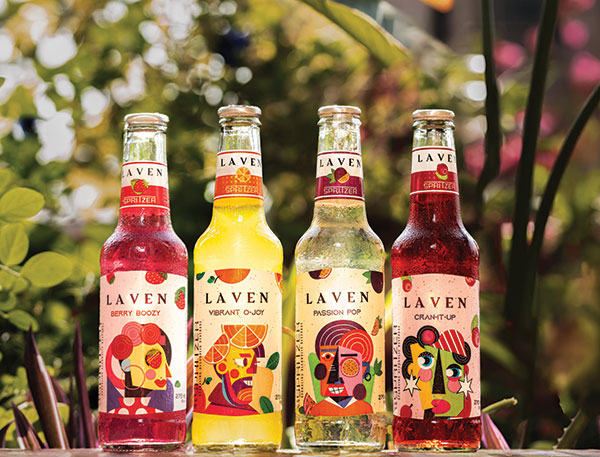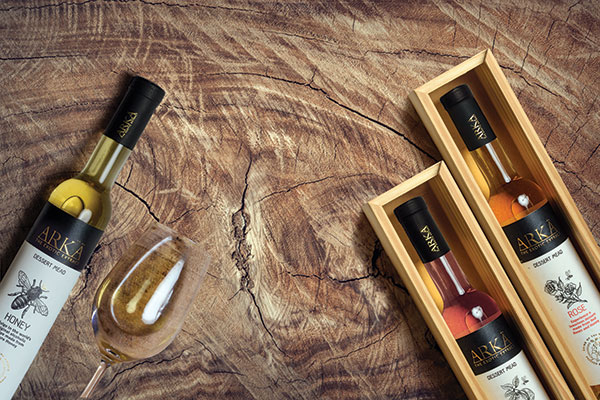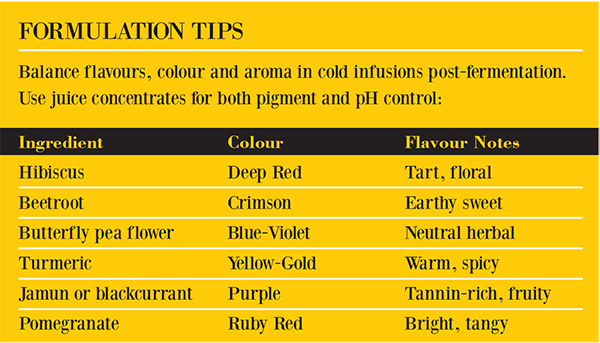Mead is not just a beverage, it is a bridge between nature, science and sensory exploration
Among the oldest fermented beverages known to humankind, mead – a drink made by fermenting honey with water – has found new life in modern India’s craft alcohol movement. It is being reimagined not just as a historical curiosity but as a scientifically versatile and flavour-adaptable alcoholic beverage with cleaner ferments.
As someone deeply engaged in winemaking and fermentation innovation, I’ve seen first-hand how mead allows creativity to flourish – from dry, robust styles to low-alcohol, fruit-forward alcopops – all using a single core ingredient: honey.
India’s mead history is ancient. Early Vedic scriptures and tribal fermentation practices indicate the use of fermented honey for both ceremonial and medicinal purposes. Known by names such as Madhu, Mada or Soma these rudimentary meads were flavoured with herbs and regional fruits.
However, mead faded with industrial spirits – until now. Today’s revival is fuelled by conscious consumers looking for natural, low-intervention, and terroir-driven alcoholic beverages.

Bengaluru’s Laven Spritzers offer natural alternatives for alco-pops.
Beekeeping renaissance
India ranks among the top honey-producing countries globally. At present, about 12,699 beekeepers and 19.34 lakh honeybee colonies are registered with the National Bee Board. India produces about 1,33,200 metric tonnes of honey and is one of the major honey exporting countries in the world.
Exports stood at 74,413 metric tonnes of honey worth ₹1221.17 crores during 2021-22. More than 50% of the honey production in India is being exported to about 83 countries.
Mustard honey, eucalyptus honey, lychee honey, sunflower honey, multi-flora Himalayan honey, acacia honey and wild flora honey are some of the major varieties of found in the country. Its biodiversity offers a wide spectrum of botanical honey varieties, each imparting distinct flavour characteristics.
- Jamun honey is rich and tannic, ideal for aging in oak barrels
- Lychee honey is delicate, floral and perfect for sweet or sparkling styles
- Multi-floral honey has a neutral profile, but is best suited for flavoured infusions
The quality of products exported from India is monitored by the government through the Department of Commerce and the Ministry of Commerce and Industry under the Export Inspection Council of India (EIC) Act.
Major production zones include Maharashtra, Uttar Pradesh and parts of North-East India, home to indigenous beekeeping and untapped potential for regional meads.
Invisible ingredient
Unlike grape juice or malt wort, honey must be diluted with water to create a fermentable medium. Water is not just a diluent; it’s a critical part of the fermentation matrix.
The quality of water directly affects yeast performance, flavour expression, and product stability. Honey musts typically use a 1:3 ratio with water, aiming for an original gravity of 1.080–1.100. The ideal water characteristics for mead-making must be:
- Free of chlorine and chloramine, as they are toxic to yeast
- Moderately mineralised, aiming at Calcium (~50 ppm) and Magnesium (~10 ppm) as they are helpful for fermentation and flocculation
- pH-buffering to attain slight alkalinity, to help moderate the sharp drop in pH during fermentation
Honey has a natural pH between 3.9 and 4.5. But when diluted, a sudden pH drop to ~3.6 occurs. This is due to the ionisation of dormant formic acid in honey. Once diluted, this acid becomes bio-available and lowers the pH rapidly.
While yeast like Saccharomyces cerevisiae can tolerate acidic environments, pH must be monitored to avoid stress-induced fermentation delays as pH may continue to drop as fermentation progresses. pH monitoring and mineral balance are essential to maintain optimal yeast health.
The honey must must be de-acidified before fermentation with the use of alkaline water. De-acidification agents such as Calcium carbonate (CaCO3), Potassium carbonate (K2CO3) and Potassium bicarbonate (KHCO3) may be used.
Fermentation balance
Meads are typically fermented using cultured wine yeasts, especially Saccharomyces cerevisiae, chosen for its high alcohol tolerance (up to 14%), clean fermentation profiles, and low volatile acidity production.
Honey contains negligible nitrogen, which is essential for yeast reproduction and alcohol metabolism. This makes nutrient management a central concern in mead making. To address this, try out the following:
- Organic sources: Some products available in the Indian market include Laffort’s Nutristart Org, Natuferm Bright and Vitamon CE which provide peptides, vitamins and sterols
- Inorganic sources, such as Di-ammonium phosphate (DAP) which supplements free ammonium ions
- SNA (staggered nutrient addition): Divided dosing over 72 hours improves fermentation kinetics and reduces sulphur off-odours
- Recommended YAN levels:
200-300 mg/litre for 10-12% ABV meads
300-400 mg/litre for high-gravity styles (ABV >13%)
Session meads
Low-alcohol, flavoured meads (4-6% ABV) are ideal for casual, wellness-oriented drinkers. They’re carbonated, fruit-forward, and naturally pigmented, offering a craft alternative to artificial alcopops that are mostly ENA based.
Some of the flavour concepts one can explore are:
- Berry Breeze: hibiscus+ blackcurrant+ mint
- Citrus Glow: orange zest+ turmeric+ ginger
- Spice Trail: jamun honey+ cinnamon+ clove
- Cool Blue: butterfly pea+ lemongrass+ basil
Natural colour is a visual promise – and in mead, this is technically challenging. Here’s what affects pigment stability and things you can do to prevent:
- Anthocyanins display red at low pH (3.3–3.6), but shift with changes while butterfly pea transitions from blue to violet in acidic meads
- Pigments from beetroot or hibiscus degrade quickly, which can be prevented via CO₂ blanketing and ascorbic acid additions
- Anthocyanins are light-sensitive, so use of amber bottles or full-sleeve labels can cut down light exposure
- Thermal processing can dull colours; opt for cold stabilisation or sterile filtration for sensitive pigments.

Arka exotic extract resonates with luxury and extravagance of honey.
Indian landscape
India’s mead revolution is led by a handful of visionary brands. While a lot of companies are now entering the space, it is going to only grow considering the versatile use of mead as a base ingredient. Here are notable mead styles that indicate the enormous landscape that meads encompass:
- Moonshine Meadery (Pune): India’s first commercial meadery, known for seasonal releases and innovation offers a wide range of carbonated meads with cold infusions from various fruits and spices. Moonshine is ever exploring not only with its product offerings but also with their packaging and consumer experiences
- Laven Spritzers (Bengaluru): Tasty tangy alco-pop made with vibrant colours and flavours, Laven offers natural alternatives for alco-pops. Made from pure honey, brings in an element of trust in the product with no compromise on the palate makes it unique
- Arka, (Mumbai): This exotic extract merges Ayurveda with modern fermentation, resonating with luxury and extravagance of honey as an ingredient much appreciated by royalty in the past.
These brands are helping redefine mead as not just a drink, but a cultural category. With honey as a base, mead is endlessly modular. It adapts to high or low ABV formats; dry or sweet profiles; still, sparkling, or pet-nat styles; and herbal, floral or fruit-based flavourings.
With its technical versatility, natural origin and flavour malleability, mead stands apart as one of the most dynamic alcoholic beverages available today. Whether presented as a robust, oak-aged traditional mead or a colourful, effervescent honey-based alcopop, it offers unparalleled opportunities for product development.
As we embrace more sustainable practices, natural ingredients, and flavour exploration, mead becomes not just a beverage of the past, but of the future. Backed by fermentation science and clean ingredient lists, mead aligns perfectly with future-forward alcohol trends: low-intervention, natural and terroir-driven.















